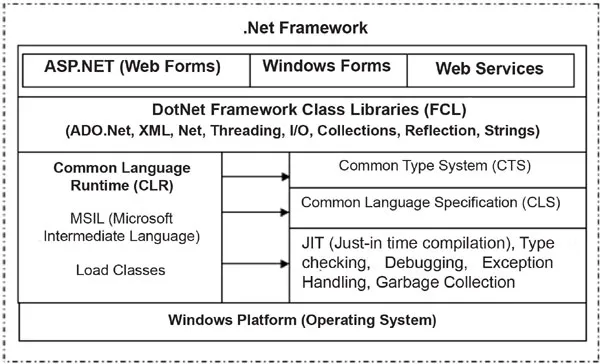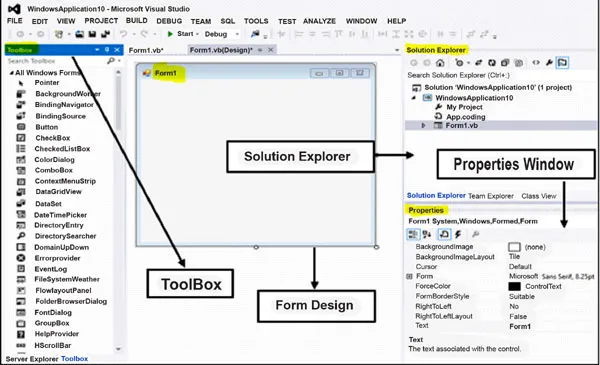
ASP.NET and VB.NET in 30 Days
Acquire a Solid Foundation in the Fundamentals of Windows and Web Application Development (English Edition)
Dr. Pratiyush Guleria
- English
- ePUB (adapté aux mobiles)
- Disponible sur iOS et Android
ASP.NET and VB.NET in 30 Days
Acquire a Solid Foundation in the Fundamentals of Windows and Web Application Development (English Edition)
Dr. Pratiyush Guleria
À propos de ce livre
Practice VB.NET & ASP.NET in simple steps
Key Features
? VB.NET and ASP.NET topics are demonstrated with various examples in-depth.
? Includes detailed explanations of all VB.NET and ASP.NET programming statements.
? Numerous hands-on exercises demonstrating database and backend programming.
Description
The book teaches the essentials of VB.NET and Active Server Pages (ASP.NET) in about four weeks. This book promises to be an excellent resource for novices interested in learning the essentials of ASP.NET, VB.NET, Windows applications, and online apps.Using examples, this book teaches how to declare variables, operators, and control statements in C++. Standard window controls like Listboxes, Comboboxes, Checkboxes, Radio buttons, Timers, Scrollbars, and Picture boxes are explored and elaborated. The basics of Database Management using VB.NET and ASP.NET are demonstrated through instructive examples. Topics like HTML, CSS, and JavaScript are also addressed in detail in the book. Readers will understand the fundamentals of front-end programming, but they will also gain an understanding of the concept of back-end programming.Topics of Arrays, functions, databases, sessions, and file upload control are covered with practical exercises and use-cases scattered throughout. After reading this book, students will be very familiar with the VB.NET and ASP.NET programming examples and can successfully transition themselves into a professional developer.
What you will learn
? For Windows, you can create simple to complicated applications.
? Develop simple database applications using VB.NET and gain knowledge of HTML, CSS, and JavaScript.
? Utilize the ASP.NET framework to develop web-based apps.
? Develop your backend programming skills while managing database connections.
Who this book is for
This book is intended for developers and students interested in learning about VB.NET and ASP.NET to gain strong scripting skills for developing server-side windows applications. It is not necessary to have any prior knowledge.
Table of Contents
1. Introduction to.Net Framework
2. Variables, Control Statements, and Common Window Controls
3. Arrays, Dialog Boxes and Menu Strip
4. Event Handling and Methods
5. Strings
6. Object Oriented Programming
7. Database Handling
8. Introduction to HTML, CSS and JavaScript
9. Asp.Net using 'VB' Language Syntax
10. Appendix A Solution to Practical Exercises
Foire aux questions
Informations
CHAPTER 1
Introduction to .Net Framework
Introduction
Structure
- Know about .NET framework
- Understanding CLR
- Know about Microsoft Intermediate Language (MSIL)
- Introduction to Visual Studio.NET
Objective
What is .NET framework?
- The ASP web development framework.
- A commitment to XML and object-oriented design.
- Support for new web services protocols such as Simple Object Access Protocol (SOAP), Web Service Definition Language (WSDL), and Universal Description Discovery and Integration (UDDI).
- A set of languages, including C# and Visual Basic .NET.
- A set of development tools, including Visual Studio .NET.
- A comprehensive class library for building web services and Windows applications; as well as the Common Language Runtime (CLR) to execute objects built within this framework.
- Specialized functionality for relational data storage, E-mail, B2B commerce, and so on.
- New .NET enabled non-PC devices, from cell phones to game boxes.

Common Type System (CTS)
System.Object. The common type system supports the general concept of classes, interfaces, and so on.Common Language Specification (CLS)
- Four official languages – C#, VB.NET, managed C++, and JScript .NET
- Common Language Runtime (CLR)
- An object-oriented platform for Windows and web development that all these languages share
- A number of related class libraries, collectively known as the Framework Class Library (FCL)
Understanding Common Language Runtime (CLR)
- The CLR includes a virtual machine, in many ways similar to the Java virtual machine.
- The CLR service includes memory management, exception handling, type checking, security checks, and garbage collection.
- It supports features of object-oriented programming.
- It loads the classes.
- CLR converts the Microsoft Intermediate Language (MSIL) code just like Byte codes in Java into native machine codes.
Know about MSIL
Starting Visual Studio.NET

